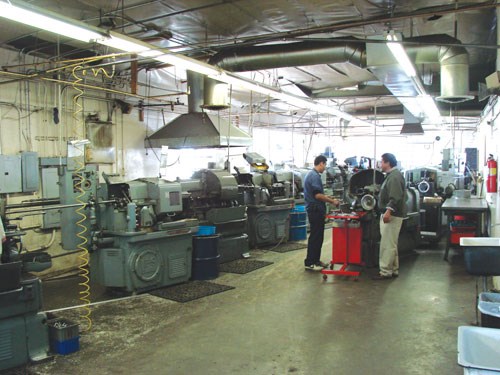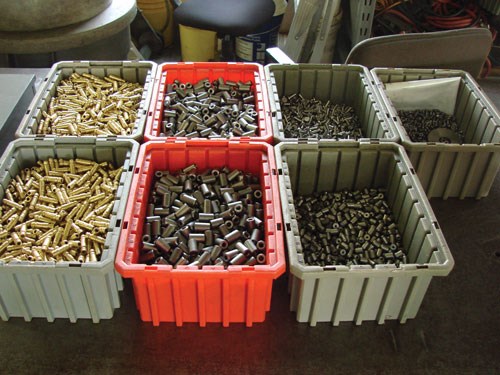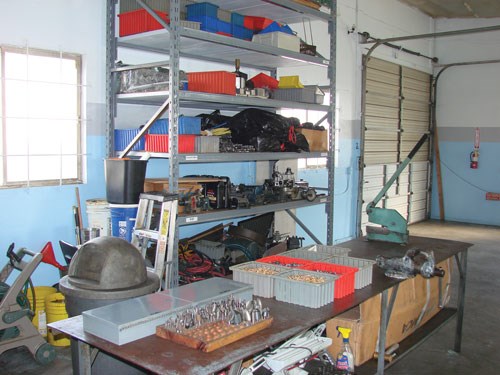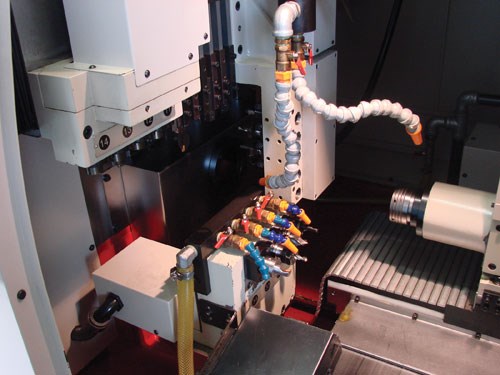A Leaner Shop With CNC
It was a tough decision, but once this company moved forward with the implementation of CNC, it quickly realized the benefits in production times, tolerances and finishes. Most important, though, was the added secondary-op capabilities that brought consistency to the personnel requirements of the shop.
Alfonso Garcia was not easily swayed. After all, he had been with the company for 20 years—10 as company president—and he had become quite accustomed to the unpredictable nature of the business, the constant personnel changes and the struggle to meet customer deadlines. He couldn’t see how incorporating CNC could alleviate the burning issues, and he couldn’t justify the cost or the time it would take to bring one of these machines into the mix. In fact, the pressures of deadlines were so immense, he couldn’t take the time to consider the possibilities.
Rite-On Screw Products Inc. (Irwindale, California) opened its doors in 1970 with two Brown & Sharpe 00G screw machines and two 2Gs. By 2005, it had amassed 18 Brown & Sharpes along with several Bridgeports and four Hardinge lathes for secondary operations. The shop was producing typical single-spindle work, mainly from brass and stainless, including parts for aerospace, medical, marine products and commercial appliance applications.
The work continued to come in through the years, and business was pretty good, according to Alfonso, but the inconsistent need for secondary operations caused constant issues in managing the number of personnel. “If the right jobs came in, we needed as many as 18 people on the floor to keep all of the machines running and get the product out the door,” he explains. “But if all we had was long-run work suited for the single-spindle automatics, we were forced to lay five or six people off rather than pay them to be doing nothing. When other jobs requiring secondary operations would come in later, we’d have to scramble to bring additional operators back in. Of course, the ones we had let go were usually no longer available, so we’d face still more challenges of finding quality employees and training.”
In 2004, Mike Colby, of Represents West (an independent sales representative for Ganesh Machinery), made his first call to Rite-On—a cold call that was not welcomed with open arms by Mr. Garcia. During the brief meeting, Mr. Colby tried to explain the benefits CNC could bring to the shop, but Mr. Garcia quickly dismissed him, saying, “We cannot increase our cycle time by taking in CNC lathes.”
About a year later, Mr. Garcia hired his brother, Raymond, to handle accounts and to get involved in the day-to-day operations of the shop. Mr. Colby had been persistent in his efforts to explain to Alfonso that CNC machines would prove to be the key to Rite-On’s continued growth. Raymond was a recent college graduate and had a solid background in computers, so Alfonso thought he could provide a fair analysis of the machines’ potential at their shop.
After further discussions, Alfonso was able to get a sense for how the additional capabilities of the CNC machines could help the company. He put together a business plan to bring in the first Ganesh machine, a four-axis CNC turn/mill center. The shop floor was already overcrowded with Brown & Sharpe machines and storage for the backlog of parts awaiting secondary operations, so Alfonso had the storage facility next door wired for the machine. “We did not feel that we could afford to stop production and take down any old machines to install the new one,” he explains. They still weren’t quite sure what they were getting into and worried that the machines would not come through as expected. “Mike told us the cycle times were quick, but we were already putting a lot of trust in someone who stood to benefit from the sale of the machine.” So they made the move as conservatively as possible, keeping the option open to fall back on the older machines if necessary.
Gary Walts, the Ganesh trainer, needed only 2 days at the Rite-On facility to show Raymond how to get the most out of the machine. From there, Raymond was able to immediately start working through the secondary operation work that had accumulated. The results were remarkable.
Within a matter of months, Rite-On began considering a second CNC machine. Alfonso and Raymond had quickly realized the consistency the step up to CNC had brought to the business, so they purchased a Cyclone 32 three-axis gang tool lathe with optional live tools. Less than a year later came the biggest commitment to CNC. Rite-On removed ten of its conventional machines, moved the Ganesh machines into the main facility and purchased yet another—a seven-axis dual-spindle mill/turn center.
Clearly the addition of CNC machines has been the turning point in Rite-On’s business. It has saved the company a lot of time and money and opened the door for new business. “Faster production, tighter tolerances and better finishes have been a great side benefit,” says Raymond. “Often overlooked in screw machine houses is the amount of time that goes into handling the part. The obvious measure is the time the machine is engaged in the metal, and a Brown & Sharpe can often knock off a part in a matter of seconds. But what about the secondary operations and the time it takes to pull the part out of the bucket and degrease and clean it before it’s ready for the next operation? It is handled multiple times, often requiring cleaning after three different operations. Being able to cut back on that time and those expenses is huge.”
But the main reason the company purchased the machines was to deal with the issue of labor. And that problem has certainly ironed itself out. Only seven employees now handle the workload that needed 18 people in the past. No longer do Raymond and Alfonso need to lay off employees when business slows down and then scramble to hire again later. And they are no longer reliant on the high-volume work that the Brown & Sharpes are so well suited for. Raymond explains, “We had gotten to a point where our profit margin was diminishing by costs related to re-hiring, training and excess handling. Now, the savings we’ve realized by carrying ten less employees for a year is roughly in line with the cost of all three of the CNC machines we purchased. And we’re far more productive and are able to take on work that we couldn’t produce before.”
— Expand Machinery
Related Content
6 Tips for Training on a Swiss-Type Lathe
There are nuances to training a person to effectively operate a Swiss-type lathe. A shop I visited a while back offers some suggestions.
Read MoreWhen a CNC Turn-Mill Doesn’t Turn
A shop in Big Sky Country uses a B-axis multitasking machine to produce complex, prismatic medical parts that require no turning complete from barstock.
Read MoreDoes a Scanning Probe Make Sense on a Swiss-Type?
Swiss-types have limited tooling capacity, but there can be advantages to giving up some of that capacity to take advantage of a touch probe — in fact, a scanning probe — to enable in-process part measurements.
Read MoreChoosing the Right Machine for Turned and Milled Medical Parts
The medical market is known for exceptionally tight tolerances and difficult materials, which means that selecting the proper machine is necessary to ensure a job is profitable.
Read MoreRead Next
Shop Jumps Into CNC Machining
Although this shop was already established and highly successful, it recently decided to make the "jump" into CNC machines, acquiring three new machines.
Read MoreSeeing Automated Workpiece Measurement in Real Time
User-friendly inspection software for CNC machining centers was shown at IMTS 2024 monitoring measurements between and after machining while performing SPC based on recorded measurement values.
Read MoreDo You Have Single Points of Failure?
Plans need to be in place before a catastrophic event occurs.
Read More













.jpg;maxWidth=300;quality=90)













